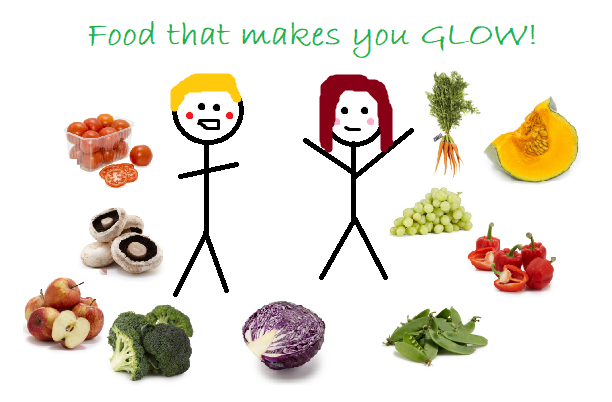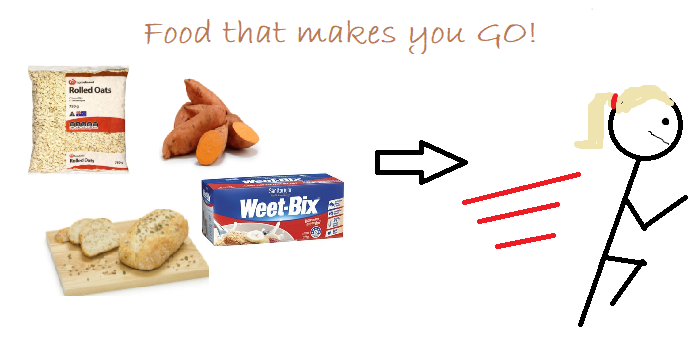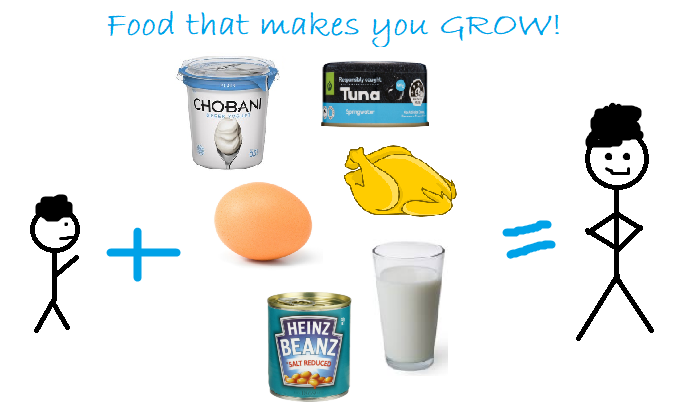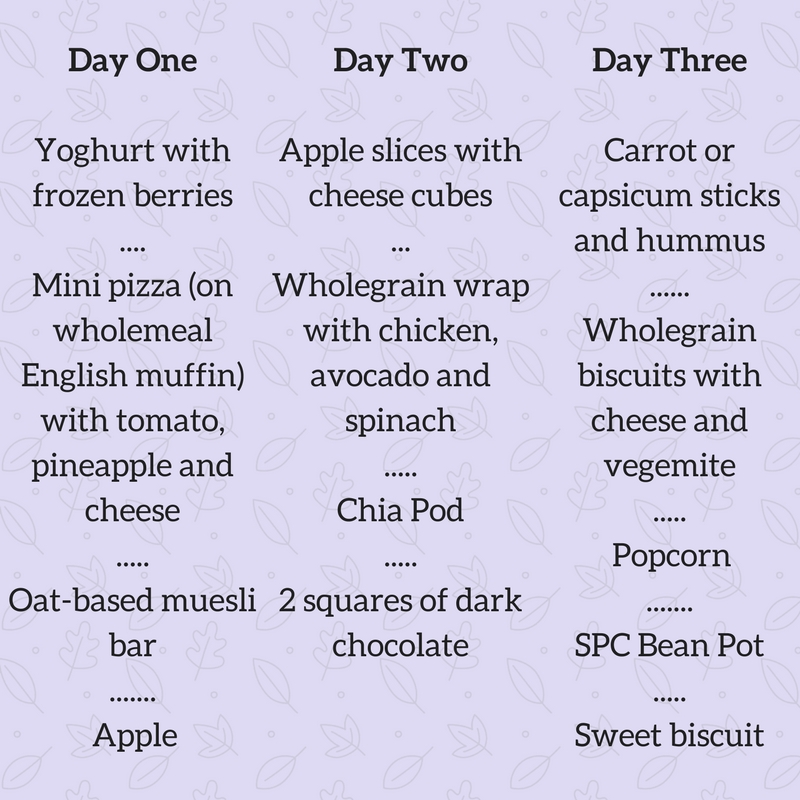Love Your Lunch Box

Picture this. It’s a warm summer’s evening, exactly 8pm on the last Sunday in January. You have had a jam packed day pulling together everything your children need for their first day back at school. Finally they’re in bed and it’s time to put your feet up. Then it hits you. You had been so busy organising uniforms and workbooks that you had completely forgotten to prepare their lunch boxes. The anxiety builds. Rustling around in the pantry, the anxiety continues to build. Lunch boxes have always been a source of major stress for you. Those same tricky questions that pop up time and time again come rushing to the surface;
“How can I make this less stressful for both myself and my child?”
“How do I make sure my child is getting all the nutrients they need?”
“What foods are QUICK and EASY but HEALTHY at the same time?
“Why is my child such a fussy eater?”
In a whirl of unanswered questions, you slowly close the pantry doors, walk over to your wallet and pull out a ten dollar note. You slip the money into your child’s backpack and in an exasperated sigh say “I give up! I guess it’ll be lunch from the canteen tomorrow”.
If you can relate to the above scenario, don’t worry you are not alone! Food and nutrition can be a confusing topic at the best of times, let alone when you’re providing food for someone else.
Just as there is no ONE way of eating that works for everyone, there is no ONE answer to the above questions. I encourage you to read the tips and tricks below, take what will work for you and adapt what won’t to suit you and your family’s lifestyle.
1. “How can I make this less stressful for both myself and my child?”
There is a lot of pressure placed on parents nowadays when it comes to what, when and how to feed your child. These pressures are both internal, as described above, and external, coming from your kids, other parents, teachers and of course the media. Not to mention, lunch box duty is often a thankless task. So let me take you through five steps to reducing this stress:
1. Congratulate: First up, I want you to give yourself a pat on the back. You heard right. Have a self-indulgent moment. You got this far. Doesn’t matter what the food was or how it was served. Your child has and will continue to be fed and that’s an accomplishment in itself.
2. Share the responsibility: It’s only natural for parents to take on an endless amount of responsibility, but in the case of food and eating try and let your kids share some of the load. Ellyn Satter’s Division of Responsibility provides a framework on how best to divide the roles as outlined below;
– Parents decided WHEN, WHAT and WHERE. In other words, parents provide structured meal and snack times at locations of their choosing i.e. tea-time is always at 6-6.30pm at the dining table, afternoon-tea always at 3.30pm on the porch. And parents choose the variety of foods that are on offer. The reason for this is that kids thrive on routine. Once they know what to expect and when to expect it, it’s much easier for them (and their bodies) to get on board.
– Children decide WHETHER and HOW MUCH. Kids have a beautiful innate ability to know whether they are hungry, and if so, how much they need until they are full. We want to encourage children to listen to their body rather than ignore it. Try to steer away from the age-old phrase “Finish everything that’s on your plate!” Allow your kids to choose what they want to eat out of the food you have provided (if at all) and how much they need. Paediatric Dietitian Kathleen Perrone does a fantastic job of showing this approach in action on her blog Healthy Start Nutrition which is a MUST READ.
3. Create a peaceful environment: Kids will inevitably kick up a fuss at some stage. A few tricks that can reduce the likelihood of this happening are:
– Limit distractions at meal times i.e. turn of the TV, put phones away (parents included).
– Enjoy meals as a family at the table.
– Avoid pressuring your child by giving them the responsibilities above (see here for more tips on this).
– Provide at least one food you know your child will eat, even if it’s just some slices of wholemeal bread or pasta at dinner.
4. Keep it neutral: As parents, it can be very tempting to want the best for our kids, and this can mean wanting them to eat their vegetables. “If you don’t eat your vegetables, you won’t get dessert” is a very common phrase heard around the family table. When dessert is a reward for eating vegetables, foods will naturally fall into a hierarchy with ice-cream at the top and peas at the bottom. This can create an unhealthy relationship with foods that will often endure right into adulthood. Do you have any negative feelings towards certain foods that may stem from childhood?
5. Teach and model variety: Another option to putting conditions on food, is to teach variety. After all, it’s having a VARIETY of WHOLE foods that leads to the best health outcomes. For example, if your child comes home from school asking for a sweet biscuit but they have already eaten the one in their lunch box, you might say “I see you’ve already had a sweet biscuit today. Would you prefer a yoghurt or banana.” Likewise, if they come home asking for a banana but they had one at breakfast you might say “Remember you had a banana at breakfast? Would you prefer some crackers and cheese or a sweet biscuit?” Although the concept of ‘variety’ makes sense to us as adults, younger children are typically more concrete thinkers and may struggle to grasp such an abstract concept. It is important that nutrition education is age appropriate. Lessons for our littlies should be paired with demonstrations and role modelling to improving understanding, such as providing balanced meals and snacks, doing no-pressure taste tests, getting kids in the kitchen or creating a container garden.
2. “How do I make sure my child is getting all the nutrients they need?”
For kids to keep their bodies and brains functioning, it is important to provide them with a variety of good quality protein, fats and carbs. Food variety is an important topic to teach kids. Placing the emphasis on variety rather than foods being “good” or “bad”, “healthy” or “unhealthy” helps to preserve your child’s relationship with food. Having a lot of processed foods isn’t necessarily “bad” but it often replaces the more nutritious foods that your child would otherwise be eating. A great way of explaining the concept of variety is to link each of the food groups with how they can benefit us. Developing rhymes or drawing pictures to make the explanation interactive helps to make it more memorable, just like the example below.



Basically, we want to choose something from each of the following categories to make sure we have a balanced lunch box:
- Veggies
- Fruit
- Protein-rich food
- Smart carbs
- Healthy fats
Have a look at some ideas from each category below.
Veggies
- Veggie sticks (e.g. carrot, cucumber, capsicum, celery)
- Cherry tomatoes
- Salad in sandwich (lettuce, spinach, tomato, grated carrot, beetroot)
- Roasted or grilled veggies (e.g. honey roasted pumpkin and carrots)
Fruit
- Whole fruit (e.g. banana, apple, pear, grapes)
- Sliced fruit (e.g. apple slices)
- Fresh or frozen berries
- Citrus fruit (e.g. orange segments or mandarin)
- Fruit salad
- Tinned fruit in juice (e.g. pineapple slices)
- Fruit compote
Protein-rich food
- Sandwich filling (chicken, tuna, egg, cheese, roast beef, salmon, turkey)
- Yoghurt
- Cheese cubes
- Protein spreads or dips (cottage cheese, cream cheese, hummus, yoghurt-based)
- Hard-boiled egg
Smart carbs
- Wholegrain, wholemeal or sourdough bread/wrap or pita
- Wholegrain crackers/rice or corn wafers
- Bean mix
- Corn (fresh, frozen or canned)
- Brown rice
- Wholemeal pasta
- Rice noodles
- Oat-based bar or muffin
- Popcorn
Healthy Fats
- Nuts or nut butter (if allowed at school)
- Avocado
- Seeds or seed butters (e.g. tahini)
- Olive-oil based spreads or dressings (often lightly-flavoured most preferred)
- Pitted olives
Don’t forget to include foods that are commonly referred to as “treat” or “sometimes” foods a few times a week or even daily. Doing so helps us stay true to our message of variety or balance and keeps our kids from feeling deprived. “Play foods” is a more positive term that encourages enjoyment and social eating. This may be a sweet biscuit, pikelets with jam, strawberries dipped in chocolate, honey on bread or a couple of squares of chocolate.
In saying this, it is best to stay clear of fruit juice, cordial or soft-drink most of the time. These drinks won’t help with your children’s satiety or add much in the way of nutrition. The first drinks of choice should be water followed by milk. Juice is okay when it is 100% fruit, however kids and adults don’t need much at all with the recommendation being up to 150ml per day. Try freezing berries in ice cubes or adding cubed frozen mango to make water more exciting.
Extra hints:
- Add frozen berries or freeze yoghurts overnight to keep them cool over the day (you can even buy refillable pouches, found here and here, to help reduce the waste from packaged goods).
- Encourage kids to get involved in the lunch box planning by downloading the Lala Lunchbox
- For kids that don’t like sandwiches or wraps, lunch boxes with compartments can be a fantastic alternative. This can also stop sandwiches going soggy if kids like to have their veggies separate or if older kids are happy to put them together themselves.
What might this look like in a day?

3. “What are foods that are QUICK and EASY but HEALTHY at the same time?
Although whole foods are always best, sometimes life just gets in the way of making homemade goodies. Have a go at using the FoodSwitch app to find healthier product alternatives. Here is a snippet of our favourites below:
| The Happy Snack Company Roasted Fava Beans
Tamar Valley Kids Yoghurt pouches SPC Bean Pot Golden Days Sesame Snaps Think Food MUNCH (careful of peanuts) |
Uncle Toby’s Farmer’s Pick Muesli Bars
SunRice Wholegrain Mini Bites Cobs Natural Popcorn Chia Pods Rafferty’s Garden Fruit pouches |
4. “Why is my child such a fussy eater?”
Although the words fussy or picky are commonly used to describe kids that reject certain foods, these words can be problematic. Saying your child is fussy tends to place a negative lens of blame on them for their food choices. Fussy-eater is a description that supports the concept that the child is choosing to refuse a food due to dislike or behavioral issues rather than the more common underlying reason, being fear. Here are five tips for helping to improve food acceptance:
1. Be a role model: Try to remind yourself of the little rhyme “monkey see, monkey do.” This includes being mindful of the language you use around food.
2. Eat as a family: Even if the whole family cannot be present at dinner, make sure at least one adult eats with the children rather than serving the kids up earlier.
3. Let kids serve: Place dinner in the middle of the table and encourage kids to serve themselves. Even if all they choose to have is chicken and pasta, turning a blind eye to the tomato-based pasta sauce and grilled zucchini, that’s OK. Don’t give up if your child doesn’t like something the first time. Continue to expose your child to different foods and give them the option to try it in a no-pressure environment. The first step to improving food acceptance is simply allowing kids to see the food. For more on these steps, click here.
4. Get them excited: Involve kids in the shopping and cooking. Get them to describe what they see, taste and feel.
5. Food play: If your child gets upset when trying new foods, try introducing them outside meal times as a play activity e.g. build towers to a counting song with carrot slices.
It’s important to note that some children are more than just selective with their foods. If your child only eats a handful of foods (usually less than 20 foods), has a meltdown at even the sight of a new or disliked food or refuses an entire category of food or textures, there may be grounds to seek one-on-one advice. Extreme restrictive eating can stem from more organic causes, such as reflux or constipation. You may benefit from input from a range of specialists, such as a Dietitian, Occupational Therapist or Speech Pathologist.
I hope this article has provided you with some helpful tips and tricks to make food prep less stressful, meals more enjoyable and lunch boxes more lovable.
Enjoy!
Nadia Maxwell, Accredited Practising Dietitian
And enjoy a gift from us – Click to download Healthy Food, Happy Families – Recipe tips and Budget information

